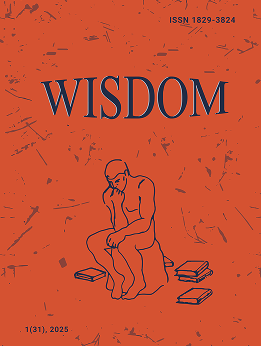The Principle of Separation of Powers in Political Science
DOI:
https://doi.org/10.24234/wisdom.v6i1.70Keywords:
seperation of powers, legislative body, political institution, structural development, functions of powerAbstract
The twentieth century doctrine considers separation of powers as a mechanism of constitutional technique that must be present in Political Science. In order to achieve this particular sense of separation of powers, this doctrine is based on the principles of specialization and independence. Separation of powers, therefore, refers to the division of government responsibilities into distinct branches to limit any one branch from exercising the core functions of another. The intent is to prevent the concentration of power and provide for checks and balances and establishment of democratic society.
Downloads
References
Chirkin V.E. (1999). Konstitutsionnyi zakon zarubezhnykh stran (The Constitutional Law of Foreign Countries). Moskva: izdatel’stvo Yurist.
Chirkin V.E. (2001). Konstitutsionnyi zakon zarubezhnykh stran (The Constitutional Law of Foreign Countries). Moskva: izdatel’stvo Yurist.
Eisenmann, Ch. (1933). L’Esprit des lois et la séparation des pouvoirs. In Mélanges Carré de Malberg. Sirey.
Grankin I.V. (1999). Parlament v Rossii (The Parliament in Russia). Moskva: izdatel’stvo AO Konsaltbankir.
Hakobyan H.H. (2007). Par’lamenty’ & par’lamentarizmy’ Hayastani Hanrapetowt’yownowm (The Parliament and Parliamentarism in the Republic of Armenia). Er&an.
Harowt’yownyan G., Vagharshyan A. (2010). Hayastani Hanrapetowt’yan Sahmanadrowt’yan meknabanowt’yownner (Commentaries on the RA Constitution). Er&an Iravownq.
Hoiberg, D. (Ed.) (2007). Encyclopedia Britannica. (15th edition).
Kozlova E.I. (1999). Konstitucionnyi zakon Rossii (The Constitutional Law of Russia). Moskva.
Lafitskii V.I. (1994). Kongress SAHA. Parlamenty mira (The US Congress, The Parliaments of the World). Moskva: Progress.
Montesk’e Sh. (1995). Izbrannye trudy (Selected Works). Moskva.
Shokhin A.N. (1997). Vzaimodeistvie vlastei v zakonodatel’nom protsesse (Cooperation of the Authorities in the Legislative Process). Moskva: izdatel’stvo Nash dom.
Starodubovskii B.A., Chirkin V.E. (1986). Gosudarstvennoe pravo burzhuaznykh stran I stran, osvobodivshikhsya ot kolonial’noi zavisimosti (State Law of Bourgeois and Liberated Countries). Moskva.
Strashun B.A. (red.) (1996). Konstitutsiya zarubezhnykh stran (The Constitution of Foreign Countries). Moskva.
Troper, M. (1990). Montesquieu e la separazione dei poteri negli Stati Uniti. In Materiali per una Storia della Cultura giuridica. (Anno XX, num. 1). Genova.
Vile, M. J. (1967). Constitutionalism and the Separation of Powers. Oxford: Clarendon Press.
Xachatryan H. (1994). Par’lament & patgamavor (Parliament and Member of Parliament). Er&an Areg.
Xropanyowk V.N.(1997). Petowt’yan & iravownqi tesowt’yown (Theory of State and Law). Er&an.
Downloads
Published
How to Cite
Issue
Section
License
Creative Commons Attribution-Non-Commercial (CC BY-NC). CC BY-NC allows users to copy and distribute the article, provided this is not done for commercial purposes. The users may adapt – remix, transform, and build upon the material giving appropriate credit, and providing a link to the license. The full details of the license are available at https://creativecommons.org/licenses/by-nc/4.0/.















